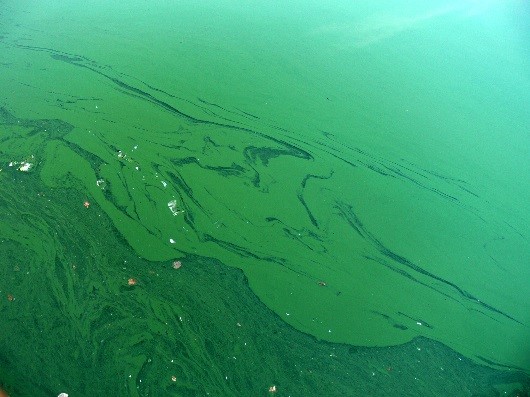Blue-green Algae: Be Aware of the Risks
By Dr. Deon van der Merwe

|
||
| Blue-green algae “bloom” or “scum” |
Excess nutrients in ponds and lakes, in combination with warmth and sunlight, make it possible for cyanobacteria (also known as blue-green algae) to multiply exponentially, leading to discoloration of the water and/or the formation of scums, a condition known as a HAB (harmful algal bloom). HABs have the potential to generate dangerous toxins that can sicken or even be deadly to people and animals. Some of the toxins can be irritating to the skin and mucous membranes. Inhalation of water droplets, for example when swimming or water skiing, can cause irritation in the airways. Ingestion of affected water is, however, the most dangerous form of contact. It can lead to severe gastrointestinal inflammation with vomiting and diarrhea, and absorption into the rest of the body may lead to life threatening adverse effects in the liver and the nervous system.
Not all types of blue-green algae or other causes of water discoloration and scums produce toxins, but if such conditions are encountered it is best to assume that the water could be dangerous until its safety can be confirmed.
If water discoloration or scums are encountered at a publicly accessible lake, please contact the HAB Hotline (785-296-1664) established by the Kansas Department of Health and Environment (KDHE), or file a report on their website: http://www.kdheks.gov/algae-illness.
For private lakes and ponds, samples may be sent to the KSVDL for testing. For more information, please call KSVDL Client Care at 866-512-5650.
Feline idiopathic ulcerative dermatitis: What do we know to date?
Return to Index